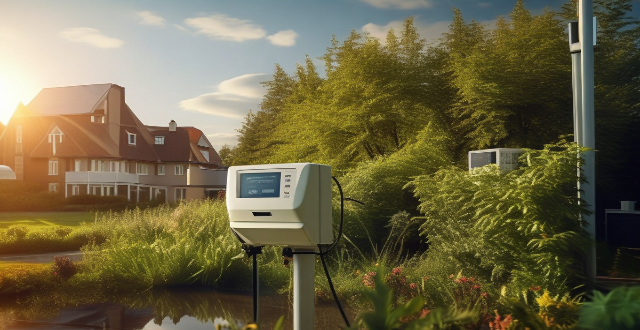The Internet of Things (IoT) is transforming agriculture by enabling precision farming, crop monitoring, resource management, and livestock management. IoT technologies such as soil moisture sensors, weather stations, drones, GPS-guided equipment, remote sensing, smart traps, yield mapping, smart irrigation systems, variable-rate fertilizer application, energy-efficient lighting, waste management systems, health monitoring devices for livestock, automated feeding systems, milking parlors with sensors, and animal tracking devices are revolutionizing farming practices. These technologies provide farmers with real-time data and insights into their operations, increasing efficiency, reducing costs, improving crop yields, and minimizing environmental impact.

IoT in Agriculture: Revolutionizing Farming Practices
The Internet of Things (IoT) has the potential to revolutionize agriculture by enabling farmers to monitor and manage their crops more efficiently. Here are some ways IoT can be used in agriculture:
Precision Farming
- Soil Moisture Sensors: These sensors can measure the moisture content in the soil, allowing farmers to water their crops only when necessary. This not only saves water but also reduces the risk of overwatering or underwatering.
- Weather Stations: By collecting data on temperature, humidity, wind speed, and precipitation, weather stations can help farmers make informed decisions about planting, irrigation, and harvesting.
- Drone Technology: Drones equipped with cameras and sensors can survey large fields quickly and provide real-time data on crop health, pest infestations, and soil conditions.
- GPS Technology: GPS-guided tractors and other farm equipment can operate autonomously, reducing labor costs and increasing efficiency.
Crop Monitoring
- Remote Sensing: Satellite imagery and aerial photography can be used to monitor crop growth, detect diseases early, and assess damage from natural disasters.
- Crop Health Monitoring: Sensors placed on plants can measure factors such as leaf temperature, photosynthesis rate, and nutrient levels, providing valuable insights into plant health and stress levels.
- Pest Management: Smart traps that use sensors to detect pests can alert farmers via mobile apps, allowing them to take immediate action without having to physically check each trap.
- Yield Mapping: By analyzing data collected from various sources, farmers can create detailed maps showing areas of high and low yield within their fields. This information can be used to optimize future planting strategies.
Resource Management
- Water Management: Smart irrigation systems can automatically adjust watering schedules based on weather forecasts and soil moisture levels, ensuring optimal water usage.
- Fertilizer Application: Variable-rate fertilizer application systems can apply different amounts of fertilizer based on soil type and crop needs, reducing waste and improving yields.
- Energy Efficiency: Energy-efficient lighting systems and climate control devices can be used in greenhouses to reduce energy consumption while maintaining optimal growing conditions.
- Waste Management: IoT-enabled waste management systems can help farmers dispose of organic waste more efficiently by tracking its origin and destination.
Livestock Management
- Health Monitoring: Wearable devices attached to livestock can monitor vital signs such as heart rate, breathing rate, and activity levels, allowing farmers to detect illnesses early and prevent outbreaks.
- Feeding Systems: Automated feeding systems can dispense feed based on the nutritional needs of individual animals, reducing waste and improving overall health.
- Milking Parlors: Milking parlors equipped with sensors can monitor milk production and quality, ensuring that only high-quality milk is produced.
- Animal Tracking: GPS collars or ear tags can track the movement of livestock, helping farmers locate lost animals and monitor breeding patterns.
In conclusion, IoT offers numerous opportunities for improving agricultural practices by providing farmers with real-time data and insights into their operations. By adopting these technologies, farmers can increase efficiency, reduce costs, and improve crop yields while minimizing environmental impact.